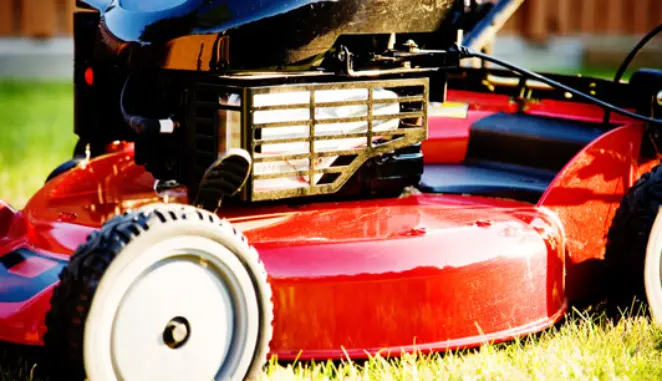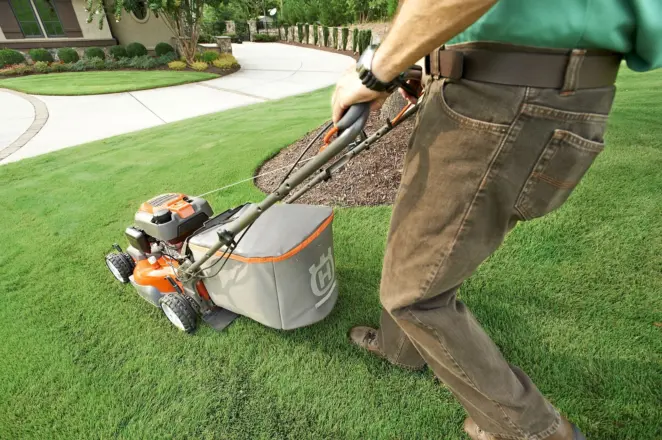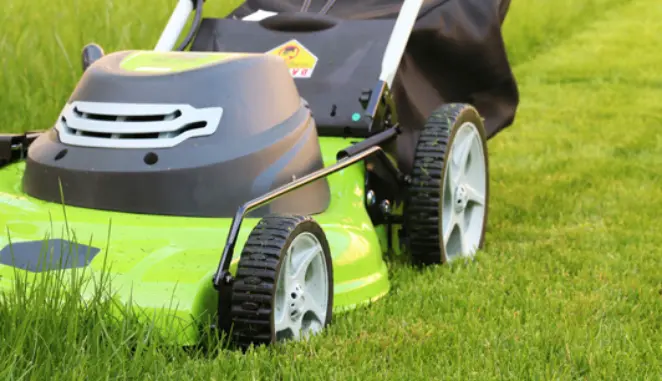Lawn Mower Buying Guide
Lawnmower History
Unless you’re willing to invest in a goat, a lawnmower is the single most essential purchase for the upkeep of a tidy lawn.
In a crowded market, it can be difficult to know what lawnmower is best, and how to keep it working in the best possible condition. Rather than thinking of a lawnmower as something quietly rusting in a garden shed, it’s better to think of a lawnmower as an essential part of your garden. This way you’ll get years of service out of your lawnmower, as well as keep your lawn looking at its best.

This lawn mower buying guide will show you what the lawnmower is and where it comes from, as well as helping you to pick the right machine for your garden.
We’ll take you through some basic information about mower engines and some handy repair tips, as well as important lawnmower safety.
This guide also includes a guide about the best time and ways to use your lawnmower so you can get the most use of your investment.
Britain buys over a million mowers every year. That’s a lot of lawns!
A modern lawn can roughly be described as any area of closely-cropped grass around a domestic property, although the first recorded lawn belonged to Pliny the Younger in 62AD.
Originally, all lawns were cropped with scythes in much the same way that all other plants were.
Originally all lawnmowers were manual rotary systems to be pushed along, or pulled along by horses in cases of larger areas.
After the invention of the internal combustion engine, the addition of a small gasoline engine to law-mowers became common.
Now it is possible to get a wide variety of lawnmowers for a variety of different gardens; the ride-on mower, the mechanised mower, the Flymo, and even a robot mower.
The invention of the lawnmower, like all good ideas, was an accident. Edwin Budding was originally aiming to create a machine to cut the bobbly bits off industrial levels of cloth; Budding realised that his invention of a revolving cylinder blade over a stationary fixed blade could also cut grass in a straight and neat line. This basic design is still used today for all lawnmowers.
What lawnmower should I buy?
When Edward Budding invented his new contraption, he faced ridicule and doubt as no one could understand the point of having a machine to cut lawns. (That, of course, was what servants with a scythe were for.)
He probably never thought was nearly 100 years of there would be thousands of lawnmower types available, many with unique selling points and different approaches to what is, essentially, all the same job.
Yet each lawn is different and like most things it’s essential to have the right tools for the job. The things you need to consider are:
- The size of your lawn
- The type of power
- The finish required
- The method for grass collection
The size of your lawn is the first and most important consideration. A large ride-on lawnmower designed for football pitches wouldn’t be much good for a small terrace back garden; alternatively a small rotary mower wouldn’t be much use in the grounds of a castle.
A lawnmower doesn’t necessarily need to be powered by an engine; a small hand-powered rotary blade can be just as effective in small spaces, particularly when keeping in mind the time to tune and maintain an engine.
However, for a larger garden with good power access an electric engine might be exactly the right solution, or a small petrol engine if the power cable for an electric motor is likely to be run over!
The finish required is a more technical question. Many people just require the grass to be cut neatly in a quickest and most efficient way possible.
At such, a traditional four-wheel rotary mower would be the best machine for you. However, if you’re dedicated to a bowling green type of lawn, you’ll require a heavier mower, with a cylinder-shaped lawn mower and a heavier roller.

You also need to consider a method for collecting grass. Many modern lawnmowers have a grassbox to collect the grass as you go along, rather than having to rake the lawn once you’ve finished mowing.
A grassbox, though, can be cumbersome and cause mowing to take longer. It’s a case of what you prefer to do in your garden! An alternative is the newer grassboxes which mulch your freshly cut grass, taking up less space and making life easier when it comes to tipping out the grass cuttings onto your compost heap. Again, it depends on what one you prefer and fits in best to your garden and your lifestyle.
Lawnmower safety
Although a lawnmower is one of the more common pieces of garden equipment, it also has the potential to be the most dangerous. With a little common sense, it’s possible to store, use and repair your mower in complete safety.
Before mowing:
- Always read the manual.
- Always make sure your mower is stowed away securely from young children.
- Clear the area of stones and debris.Put some shoes on! Never mow barefoot.
- Remember to keep hands and feet away from the blades.If it’s raining, don’t use the electric mower that works from the mains!
- For petrol engines, make sure not to overfill the fuel tank.
During mowing:
- If the machine starts to vibrate, make funny noises or does anything odd, always stop to investigate!
- Don’t run over the mains cable. This might sound obvious, but an amazingly large amount of accidents happen this way.
During servicing
- Always remove the spare plug wire when servicing to prevent accidental starting.
- Disconnect the main plug before making any changes on electric machines.
- Avoid transporting petrol engines with fuel in the tank.
- Regularly check that all nuts and bolts are secured on tightly.
- Replace any damaged or missing items immediately.
- Ensure that blades are not worn, damaged, cracked or bent.
- Check fuel lines for any breaks.
- Do not run an engine in an enclosed area.
- Wear protective equipment when appropriate.
This is not an exhaustive list. Remember that lawnmower blades are sharp and engines can heat up and you’ll be able to use and repair your lawnmower safely.
Engines and basic repair techniques
This guide isn’t a definitive list of all mower engine designs, quirks, and mechanical fixtures. Rather, this is an introduction to basic lawnmower design and some commonly encountered problems with the domestic mower.

If you’re ever unsure of a repair, the best bet will always be to take it to your local lawnmower dealer or trusted domestic appliance mechanic.
The basic petrol lawnmower is one of the most common types of lawnmower engine. Petrol engines can generally be divided into lighter two-stroke engines or heavier four-stroke engines.
Two-stroke engines tend to be lighter, with fewer moving parts and no oil sump. Four-stroke engines more closely resemble a car engine, with a separate oil sump and a greater amount of power for larger areas where weight is not an issue.
The oil issue is more crucial than it might otherwise appear. A two-stroke engine doesn’t require oil to be added to the engine separately; you will need to find fuel that contains an engine lubricant. These are easily available on the market. If you’re not sure if you have a two-stroke or a four-stroke engine, check the manual.
If this has been mislaid, check for an oil cap, much like the one you’ll have in your car. Failing that, telephone your local garden machine dealer, who should be able to help you if you quote the engine model. If you do have a four-stroke engine, you’ll need to occasionally top it up with new oil, as well as change the oil periodically – just like a car.
If you feel confident on a mechanical level, then it’s a relatively straight-forward job if you follow the manual. If you’re not too confident, make sure it’s one of the areas that gets some attention when you take the machine in for servicing. As a basic rule of thumb, the oil will be ready to be changed after about 25 hours of use.
In terms of fuel for your petrol engine, it’s important to use the right kind of fuel. It’s important to get the appropriate specialist fuel for lawnmowers, as petrol for cars is designed for a completely different type of engine. It also deteriorates very quickly if left in a jerry can, or in your lawnmower engine.
A better fuel to use for lawnmowers is alkylate fuel. This fuel has the advantage of being far more environmentally sound as well as better for your lawnmower, keeping the engine cleaner and not leading to any unpleasant petrol smells. Speak to your local garden machinery dealer for advice on which specific alkylate fuel is best for your machine, and where to obtain it.
Common engine problems
If you’re having a problem with your engine, it’s often helpful to know where to start when it comes to getting the engine fixed.
"My engine won’t start!"
Electric problem: spark plug, ignition, cut-out switch or flywheel key.
Cure: replace spark plug, check plug lead, cut-out switch, clean points, check coil and flywheel key.
Fuel problem: no fuel, stale or contaminated fuel, blocked fuel pipe/tap/carburettor, engine flooded, or clogged or unvented fuel cap.
Cure: if the spark plug is dry, dip the plug tip in fuel then refit; if the engine starts, the carburettor requires attention.
Compression problem: valves, piston or connecting rod.
Cure: will probably require an engine strip down – take to a professional!
"Engine runs rough"
Engine misfire: spark plug, points, carburettor setting, valves or clogged filters
Cure: change spark plug, clean points, readjust carburettor, check ignition coil and filter.
Engine overheats: low oil level, blocked cooling fins, lean fuel mixture.
Cure: top up or change the oil, clean engine and flywheel cooling funs, check in tank for any fuel contamination.
Engine smokes: rich fuel mixture, clogged air filter, overfilled with oil, machine has been tipped.
Cure: check oil level, change fuel, change or clean air filter. If machine has been tipped and smoking does not stop within five minutes take to a professional.
Fun lawnmower facts
- The world’s only lawnmower museum is in Southport, Merseyside. The owner, ‘lawn ranger’ Brian Radam is possibly the world’s leading expert on lawnmowers. The author of this guide has the misfortune to live in Southport, and confesses she’s never visited.
- It is possible to race lawnmowers, presuming you have the time to adapt the motor and are willing to race around a field with a bunch of speed freaks with spinning blades. Rather you than me. Speeds of 60mph are often reached.
- That said, the fastest mower in the world was driven on 23 May 2010, reaching a speed of 87.833 mph. I get anxious doing 75 on a motorway.
- The record for cutting the most grass in the shortest time in one acre per minute. I suspect it probably wasn’t the most even cut in the world.5. Even Stephen Fry thinks there isn’t much to be said about lawnmowers.
N.B. This section is, perhaps, not be taken at face value!
Lawn upkeep with a lawnmower, inc. lawnmowing guide
Now you have a lawnmower and hopefully a half-decent idea of how to maintain your lawnmower safely, you need to know the best way of cutting your lawn.
- Firstly, never mow when the grass is wet. It’s more work for you and more work for your mower; you’ll get a better cut when the grass is dry.
- Make sure that you put your mower in for a service between December-February – the service will be quicker and cheaper, and it means you’ll be ready to mow on the first warm weekend of the year, putting you at a distinct advantage over your neighbours!
- At the start of the season, make sure you feed your lawn and don’t cut the grass too short. After a long winter, your turf will be grateful for the nutrients and the gentle treatment!


- Mow once or twice a week between April and October, depending on the weather conditions and how quickly your lawn is growing.
- Set your lower blades at a height that is suitable for the time of year – higher when the turf is growing slowly, lower when it’s faster. Try to mow your lawn in a straight and regular line, if you prefer neat stripes – turf tends to grow in the way it was most recently cut.
- Don't forget to water your turf occasionally – obeying all local hosepipe regulations, of course.
Mowing calendar
November – February = Get the mower serviced! If the weather is mild and the turf is growing, it can be occasionally cut. If your lawn is frozen, don’t walk on it.
March = aerate and rake the lawn to encourage the grass and discourage unsightly moss.
April = Apply a fertiliser, and begin your mowing schedule.
May = Keep on mowing.
June = See above.
July = Fertilise and water the lawn if necessary. If it’s particularly hot, don’t cut the lawn too close to avoid traumatising the turf.
August = Carry on mowing as appropriate; water as and when necessary.
September – October = Slowly decrease your mowing schedule. Apply a winter fertiliser, and weed killer if necessary.


